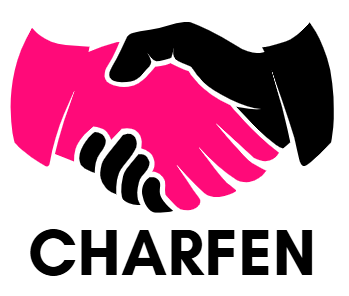Advertisement
Candle tins often become more than simple packaging. They influence how customers perceive product quality, determine shelf appeal, and affect the overall user experience. A well-designed tin can elevate an ordinary candle and give it a premium feel. For brands that rely heavily on presentation and consistency, choosing the right type of wholesale tin becomes a strategic decision rather than a small procurement task.
Selecting tins in bulk also affects production flow. The right choice can reduce filling errors, lower damage rates, and simplify storage. Because tins interact directly with wax, fragrance oils, labeling materials, and heat during pouring, their specifications must match your production standards. This is why purchasing candle tins wholesale requires deeper consideration than simply choosing a shape or color.
Material and Build Quality
The composition of a tin determines durability, heat resistance, and overall performance. Most candle tins are made from tinplate, a thin steel sheet coated with tin. However, not all tin plates behave the same under heat. Inferior material may warp during pouring or discolor after burning.
Thickness also matters. Tins with thicker walls feel more premium, stay stable while burning, and protect wax better during shipping. Thinner tins may save costs, but they can dent easily, heat up faster, and pose safety concerns. Brands targeting luxury or artisanal markets typically choose more robust tins, while mass-production lines might prefer lightweight designs for efficient shipping.
Coatings on the interior must be safe for candle use. An epoxy resin or food-grade coating prevents reaction with fragrance oils and ensures the wax sets smoothly. Without a proper lining, oils may corrode the metal, altering scent and appearance.
Size and Capacity Considerations
Capacity determines burn time, pricing structure, and how your candle fits into market expectations. A small travel tin creates a different customer experience than a large luxury tin. Before committing to a wholesale order, it’s helpful to test how your wax behaves under various conditions. Wicks must match the volume; fragrance loads may need adjustment, and larger tins may require two or three wicks.
Uniformity across batches is another factor. Wholesale purchasing helps maintain consistency, but only if the manufacturer controls tolerances well. Even small variations in diameter or height can affect wick selection and burn performance. For product lines with scalable production, predictable sizing is essential.
Shapes, Colors, and Design Options
The shape of a tin can influence branding and usability. Round tins are classic and easy to wick. Square or hexagonal tins stand out visually but may require more attention during assembly. Deep tins hold more wax, while shallow tins cool faster and are suitable for aromatherapy travel candles.
Color choices affect how a product stands out on shelves. Matte black offers a modern aesthetic, metallic gold gives a luxurious impression, and white provides a clean look suitable for minimalist brands. Powder-coated finishes add durability, while printing options allow logos, patterns, or full-wrap artwork.
Wholesale suppliers often offer customization such as embossing, debossing, or custom color matching. These enhancements strengthen brand recognition, but minimum order quantities may increase depending on the level of customization.
Compatibility with Wax Types and Fragrance Loads
Not every tin is suitable for every wax. Soy wax, for example, often requires tins with good heat distribution to achieve smooth tops. Beeswax candles run hotter and may require more heat-resistant tinplate. Paraffin cools quickly and works with a wide range of tins, but scented candles with high fragrance loads need interiors that won’t react with oils.
Testing is crucial. A tin that works flawlessly with one blend might cause frosting, sinkholes, or discoloration with another. Before investing in a wholesale quantity, many candle businesses conduct a test burn to evaluate how wax, wick, and tin interact together.
Safety Features and Heat Performance
Safety is a core consideration for any candle product. Tins should remain structurally stable during burning and protect users from excessive heat. A poorly constructed tin may warp or overheat, leading to customer complaints or liability issues.
Ventilation design, lid fit, and edge finishing also matter. Lids should close securely without being overly tight, while edges should be smooth enough to avoid cutting during labeling or handling. Some suppliers offer tins with rolled edges for improved safety and aesthetics.
Heat retention also influences burn performance. A tin that gets too hot can accelerate burn time or cause tunneling. Evaluating several models through real burn tests is the most reliable way to determine whether a tin is safe for long-term use.
Labeling Surfaces and Branding Flexibility
A smooth, stable surface helps labels adhere properly, especially when using waterproof or oil-resistant labels. Slight texture or curvature can cause peeling. If your product line relies heavily on branding through labels, choosing tins with suitable surfaces is essential.
Brands that use heat-transfer labels, engravings, or printed designs need tins with coatings that can withstand those processes. Wholesale manufacturers may offer label-friendly coatings to simplify application and improve durability.
Supplier Reliability and Production Consistency
Wholesale purchasing only pays off when the supplier can consistently deliver the same quality across batches. Differences in color tone, coating texture, or dimensions can disrupt production. A reliable supplier provides test samples, specification sheets, and guarantees of batch consistency.
Communication also matters. Suppliers who respond quickly, provide clear answers, and support custom orders can significantly reduce production delays. Long-term partnerships typically yield better pricing and priority scheduling.
Pricing, Minimum Order Quantities, and Logistics
Wholesale pricing varies based on tin size, customization level, and order volume. Higher minimum order quantities often reduce price per unit, but they increase storage requirements. Before placing a large order, it helps to evaluate:
- warehouse space
- projected monthly production volume
- seasonal demand cycles
- shipping timelines and costs
Some businesses underestimate shipping costs, especially for heavy metal packaging. Choosing a supplier closer to your region or one that offers consolidated shipping can reduce expenses. Lead times also matter; custom tins may require weeks or months, so planning protects your production schedule.
Sustainability and Consumer Expectations
Eco-conscious consumers prefer packaging that can be reused or recycled. Candle tins perform well in this regard, but their coatings and decorations must also meet environmental guidelines. Metallic tins without non-recyclable coatings appeal to sustainability-focused brands.
Some suppliers now offer recycled tinplate or eco-friendly coatings. These options support green branding and align well with customers who value environmentally responsible packaging. Wholesale purchasing makes it easier to implement sustainable materials consistently across a product line.
Customization Opportunities for Brand Differentiation
Custom tins can significantly enhance product identity. Options include:
- Embossed or debossed logos
- custom lid designs
- special edition colors
- engraved patterns
- gift-set packaging formats
These details help products stand out on crowded shelves and support premium price positioning. Wholesale suppliers may offer bundled services such as inner trays, custom lids, or gift boxes. Investing in customization strengthens brand recognition and creates a cohesive product line.
Final Considerations for a Strategic Wholesale Purchase
Purchasing candle tins wholesale affects more than packaging—it shapes production efficiency, brand perception, and customer satisfaction. A well-chosen tin enhances burn performance, supports your visual identity, and protects the product during shipping. The right supplier ensures consistency, safety, and flexibility in customization.
Businesses that approach wholesale purchasing strategically usually gain long-term benefits: smoother production flows, lower unit costs, and stronger brand presentation. By evaluating materials, performance, design options, supplier reliability, and sustainability, your product line gains a packaging solution that supports growth and elevates customer experience.










